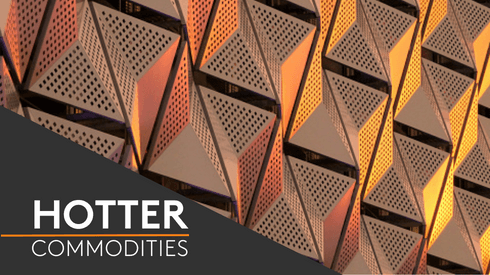Copper is king
The red metal lies at the heart of BHP’s bid for Anglo American, with a successful acquisition making BHP the world’s largest copper producer, with around 10% of global output.
BHP’s initial $38.8 billion proposal to buy Anglo American on April 24 included a plan to demerge the UK-listed miner’s platinum and iron ore assets in South Africa.
Anglo American’s management team rejected the proposed deal, along with a second bid from BHP and, as a listed company, the Anglo American management team now has to convince its shareholders that it has a better plan than either of the BHP offers.
So, on May 14 Anglo American’s management team outlined its own plan for the company, which is also focused on copper and includes the demerging of its diamond, coal and platinum mines.
Copper has been in the headlines recently, with the price of refined metal rising above $10,000 per tonne for the first time in two years and nearing record highs.
And the copper concentrate market has also been making the news with smelter treatment and refining costs (TC/RCs) reaching record lows and going into negative territory for the first time ever.
Fastmarkets calculated its copper concentrates TC index, cif Asia Pacific, at a discount of $2.40 per tonne on May 10.
In the short term, lower TC/RCs are good for miners because they reduces the amount they have to pay smelters to turn copper concentrate into refined metal.
In the long term, however, it is unclear how the growing importance of the index will affect the market, especially if miners and smelters move away from the current system of using a negotiated benchmark as a reference for annual contracts.
Supply deficit
But the recent headlines are not the reason that both BHP and Anglo American are focused on copper, analysts said, and it is the red metal’s crucial role in the energy transition that is likely to be the main driver boosting demand over the coming decade.
“Apparent [refined copper] demand will rise at a compound annual growth rate (CAGR) of 2.7% between 2022 and 2033, by which time it will reach 34.6 million tonnes,” Fastmarkets analyst Andy Cole said.
“And consumption from energy transition sectors (solar energy, wind power, electric vehicles and EV charging infrastructure) will rise at a CAGR of 13% over the same period, whereas consumption by traditional sectors will rise at a CAGR of 1.3%,” Cole added.
But copper output is struggling to keep up, sources told Fastmarkets.
“We forecast possible mine supply to rise at a CAGR of 2.2% between 2022 and 2033,” Cole said.
“Chile and Peru combined accounted for 35% of mine supplies in 2022 and by 2033 this share will have declined moderately, to 34%,” he added.
And while scrap input will help boost refined copper production, it will not be enough to match the increase in demand, Fastmarkets understands.
“Refined copper supply will grow at a CAGR of 2.5% between 2022 and 2033,” Cole said.
In addition, several major copper mines have faced production problems so far in 2024.
And developing new, large-scale copper mines has also become more difficult due to community and environmental challenges.
So in the context of growing copper demand and the increased difficulties of bringing on more production – Anglo American’s copper business is a prized asset.
Want to hear more insights on this market? Subscribe to Fast Forward, your definitive podcast for the critical minerals and battery raw materials markets, today. Your host, Andrea Hotter, will address burning topics in the critical minerals market including the latest trends, market buzz and game-changing technologies that are shaking up the sector. Find out more here or subscribe on Spotify, Apple Podcasts, Amazon Music or wherever you get your podcasts to get the latest episodes when they are released.





